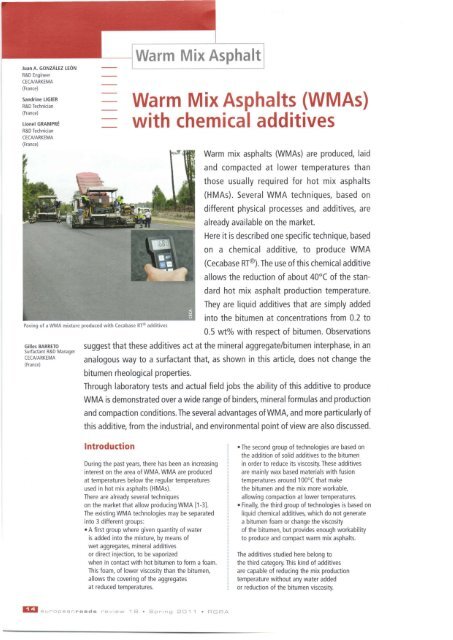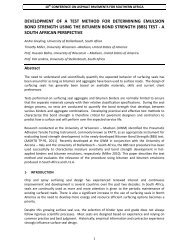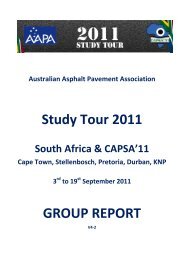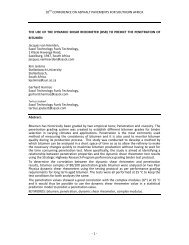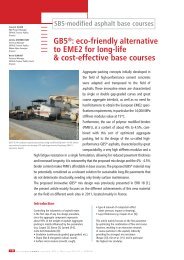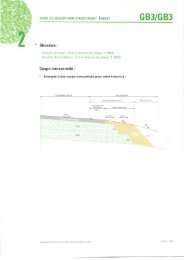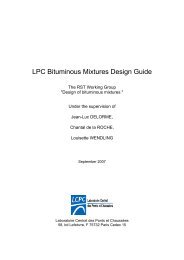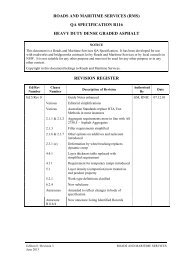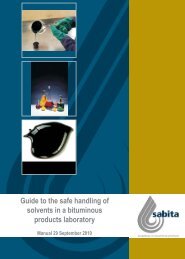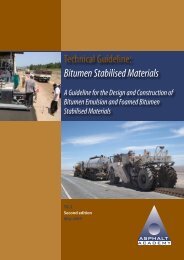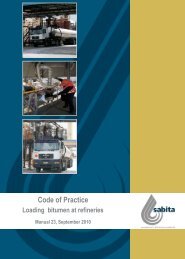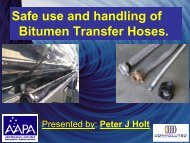Warm Mix Asphalt - Aapaq.org
Warm Mix Asphalt - Aapaq.org
Warm Mix Asphalt - Aapaq.org
Create successful ePaper yourself
Turn your PDF publications into a flip-book with our unique Google optimized e-Paper software.
Juan A. GONZALEZ LE6NR&D EngineerCECAIARKEMA(France)Sandrine lIGIERR&D Technician(France)lionel GRAMPR~R&D TechnicianCECAIARKEMA(France)Paving of a WMA mixture produced with Ceca base RT~ additivesGilles BARRETOSurfactant R&D ManagerCECAIARKEMA(France)- --I <strong>Warm</strong> <strong>Mix</strong> ASpha@<strong>Warm</strong> <strong>Mix</strong> <strong>Asphalt</strong>s (WMAs)with chemical additives<strong>Warm</strong> mix asphalts (WMAs) are produced, laidand compacted at lower temperatures thanthose usually required for hot mix asphalts(HMAs). Several WMA techniques, based ondifferent physical processes and additives, arealready available on the market.Here it is described one specific technique, basedon a chemical additive, to produce WMA(Cecabase RT®). The use of this chemical additiveallows the reduction of about 40°C of the standardhot mix asphalt production temperature.They are liquid additives that are simply addedinto the bitumen at concentrations from 0.2 to0.5 wt% with respect of bitumen. Observationssuggest that these additives act at the mineral aggregate/bitumen interphase, in ananalogous way to a surfactant that, as shown in this article, does not change thebitumen rheological properties.Through laboratory tests and actual field jobs the ability of this additive to produceWMA is demonstrated over a wide range of binders, mineral formulas and productionand compaction conditions. The several advantages ofWMA, and more particularly ofthis additive, from the industrial, and environmental point of view are also discussed.IntroductionDuring the past years, there has been an increasinginterest on the area of WMA. WMA are producedat temperatures below the regular temperaturesused in hot mix asphalts (HMAs).There are already several techniqueson the market that allow producing WMA [1-3].The existing WMA technologies may be separatedinto 3 different groups:• A first group where given quantity of wateris added into the mixture, by means ofwet aggregates, mineral additivesor direct injection, to be vaporizedwhen in contact with hot bitumen to form a foam.This foam, of lower viscosity than the bitumen,allows the covering of the aggregatesat reduced temperatures.• The second group of technologies are based onthe addition of solid additives to the bitumenin order to reduce its viscosity. These additivesare mainly wax based materials with fusiontemperatures around 1 aaoc that makethe bitumen and the mix more workable,allowing compaction at lower temperatures.• Finally, the third group of technologies is based onliquid chemical additives, which do not generatea bitumen foam or change the viscosityof the bitumen, but provides enough workabilityto produce and compact warm mix asphalts.The additives studied here belong tothe third category. This kind of additivesare capable of reducing the mix productiontemperature without any water addedor reduction of the bitumen viscosity.~ europeanroads revIew 1 B • SprIng 201 1 • RGRA


